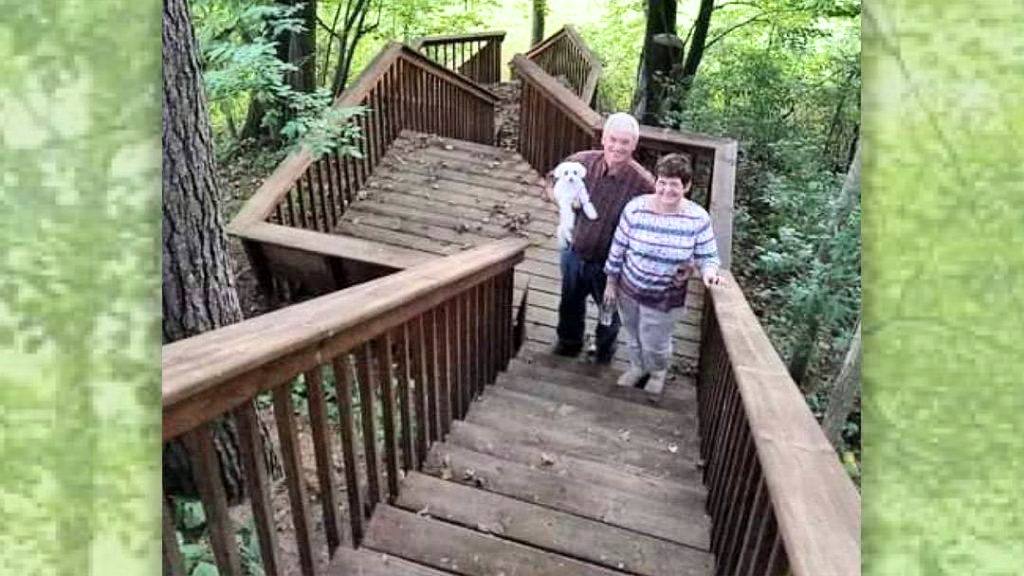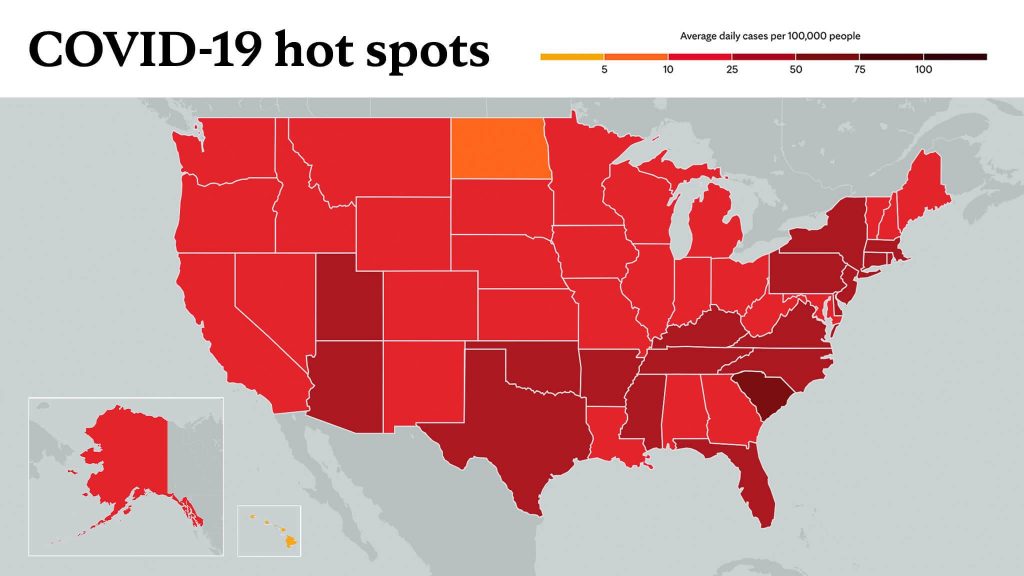
When Bob and Joyce Wachsmuth were diagnosed with COVID-19, their care team told them about two programs that could help with their care and recovery: remote patient monitoring and monoclonal antibody therapy. They quickly signed on for both.
In early January, Bob Wachsmuth felt like a winter cold was coming on. "I didn't pay much attention to it. I just felt that I had the sniffles or a head cold with a headache," says the 70-year-old kidney bean farmer.
However, his wife, Joyce Wachsmuth, soon started to feel ill, as well.
"I called Bob at work and told him that I was taking the phone off the hook and going to bed," says the 67-year-old retired public health nurse. "I was feeling like fever was coming on and had a headache. I didn't register a fever, but I was sweating and had chills."
On learning that Bob's co-worker had tested positive for COVID-19, the couple made appointments to be tested at Mayo Clinic Health System in Eau Claire, Wisconsin. Four hours after his test, Bob received a call from a COVID-19 team physician telling him that he had tested positive for the virus. Joyce learned her results were positive through Patient Online Services that same evening.
New approaches to monitoring and treatment
"I was pleased to get a call from a doctor who had looked at my chart," Bob says. "I have plenty of health issues that could complicate this, so he wanted to follow up right away."
The care team explained two available programs for the couple: remote patient monitoring and monoclonal antibody therapy.
"I told them that we were interested in both," Bob says.
The remote patient monitoring kit was sent to their home the next day. The kit includes a blood pressure cuff, thermometer, pulse oximeter and a weight scale. Patients use these devices two to four times a day so their vital signs and symptoms can be screened every day.
While Bob symptoms remained mild, Joyce's condition worsened overnight, and she experienced severe body pain.
"I ached so badly that I was ready to start crying," she says. "It hurt so badly."
Monoclonal antibody is an experimental treatment for people at a higher risk of hospitalization due to COVID-19 and is part of an emergency use authorization from the Food and Drug Administration.
"A monoclonal antibody infusion is meant to boost your own body's immune system. These man-made antibodies are meant to mimic antibodies your immune system begins to make after being exposed to COVID-19," says Lori Arndt, a physician assistant in Infectious Diseases at Mayo Clinic Health System in Eau Claire. "The treatment essentially kick-starts your immune system by blocking the virus from getting into your cells. This prevents you from developing worsening symptoms."
These proteins are designed to block the COVID-19 virus' attachment and entry into human cells. Patients receive the antibodies through IV infusion in the clinic, which takes about one hour plus another hour of observation for potential allergic reactions.
Who is eligible for monoclonal antibody treatment?
Only a select group of patients who are considered at high risk of disease progression and hospitalization will be eligible to receive monoclonal antibodies, per Food and Drug Administration and state health department guidance.
Criteria include mild or moderate symptoms of COVID-19 within the past seven days, plus one or more of the following:
- Age 65 and older.
- Body mass index of 35 and higher (any age).
- Chronic kidney disease (any age).
- Diabetes (any age).
- Immunocompromised due to cancer diagnosis or transplant (any age).
- Chronic respiratory disease (over 55).
- Cardiovascular disease (over 55).
The Wachsmuths qualified for monoclonal antibodies due to age and other chronic health conditions that increased their chances of developing severe disease or requiring hospitalization.
The day after their positive COVID-19 tests, Bob and Joyce received monoclonal antibody infusions at the same time in the same room at the clinic. Arndt says it's not uncommon to have family members receive infusion treatments together.
"We have had several family members come in together to receive treatment. It's a wonderful service to offer patients who may be feeling anxious or apprehensive about receiving treatment," says Arndt. "Knowing that your family member or loved one will be with you every step of the way is comforting."
Bob and Joyce say they were surprised at the large number of people receiving infusions when they were at the clinic. They also are happy with how smooth the process was for them.
"I was really impressed with everything, and the nurses were so knowledgeable," says Joyce. "We were preregistered, and it went just as planned. It was busy, but operated as a well-oiled machine."
On the road to recovery
After the antibody infusion, Bob's symptoms continued to improve. Within several hours, Joyce began to feel much better, too, with no fever, chills or body aches.
Arndt says their experience is consistent with other patients. "Most patients report improvement of symptoms with 24 to 48 hours after infusion," she says.
Following the infusions, Bob and Joyce were required to quarantine as they could potentially still shed the virus to others. They continued to rest, recover and monitor remaining symptoms at home using the remote patient monitoring equipment.
Ten days later, they were feeling nearly back to normal, with Bob returning to work and Joyce reporting increased energy.
"I feel fortunate that I got the same treatment in Eau Claire as our former president," says Bob with a chuckle. "But I didn't get a ride on Air Force One."
"We feel very fortunate and grateful that science can deliver this treatment for people," says Joyce. "I am very pleased the symptoms were less severe after receiving the infusion."
_____________________________________________
Information in this post was accurate at the time of its posting. Due to the fluid nature of the COVID-19 pandemic, scientific understanding, along with guidelines and recommendations, may have changed since the original publication date.
For more information and all your COVID-19 coverage, go to the Mayo Clinic News Network and mayoclinic.org.
Learn more about tracking COVID-19 and COVID-19 trends.








